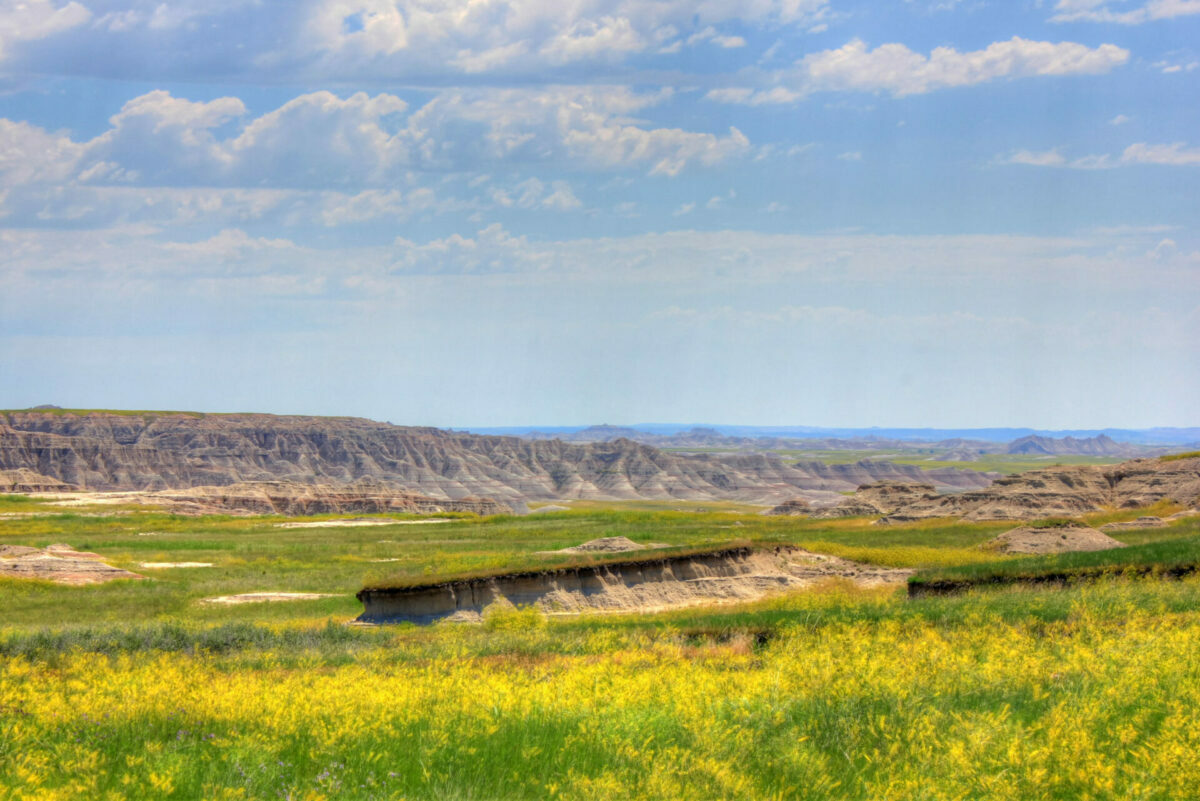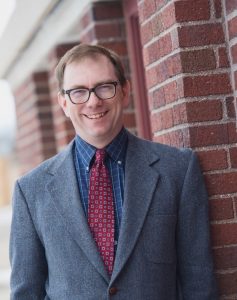Aberdeen, SD. It is hardly news to most folks that education on all levels has become increasingly controversial. When Florida school board elections become national news, we know that something significant is occurring. This seems another consequence of our deeply polarized times. If we have meaningful divisions over fundamental questions such as what it is to be human, what makes a good society, what are the origins of our nation, what is the nature of the human family and human sexuality, and which institutions we can trust and which we cannot, it seems natural that such profound disagreements would reach into that institution that does so much to form each generation, namely education. Our schools are a microcosm of who we are and who we want to be. Since the normalizing of public education in the mid-nineteenth century, it has been understood that schools play a fundamental role in shaping the character of the nation. To the extent that we find ourselves in intense opposition over that very character, we will find education at the heart of our political squabbles.
During the last two or three years, disagreements over human sexuality and race (namely critical race theory, or CRT), have been at the crux of the conflict. In this highly charged political atmosphere the creation of new standards for subjects such as History and Government become highly contentious. Any revision is going to be met with opposition, likely with claims politicization.
My state of South Dakota has not been immune to these conflicts. In 2021 the state attempted to revise K-12 Social Studies standards. The promulgated proposal quickly created controversy, largely due to issues regarding Native American history. The concern was that while the proposed standards greatly increased mentions of Native Americans and Native history over the present standards, it did not live up to the coverage indicated in a first draft of proposed standards (here is a good summary of what was at issue). This led to accusations that the state, bowing to conservative political forces, was denying the Native history. The state decided to scrap the proposed standards and start from scratch.
I was asked to be on the committee that created the revised standards in 2021. For health reasons, I had to decline. When the committee was re-formed this year, I was selected to be one of sixteen individuals tasked with coming up with new social science standards for the state. Given the politics of the matter, it was not clear if this was an opportunity or a sentence. I am happy to report that it has been, so far, more the former than the latter.
Yes, the committee started with a draft set of standards devised by experts at Hillsdale College. Hillsdale has become something of a lightning rod these days, partially because of its association with the Trump administration’s 1776 Commission. Yet anyone who is familiar with Hillsdale knows that it is probably less ideological than, say, your average School of Education at a major university. Hillsdale, if anything, is committed to an education firmly rooted in the study of Western Civilization, its history, political thought, literature, art, etc. It says more about Hillsdale’s critics than Hillsdale itself that this commitment is considered ideological or political. The complaints about Hillsdale’s involvement in this process reek of bad faith.
The committee, over several meetings, slowly revised that original draft. The “Hillsdale draft” had already included a fair amount of South Dakota specific material, such as geographical places students should know and some of our Native history and tribal practices. The committee, benefiting from the expertise of certain committee members, added to what was already there. Overall, we eliminated some parts of the draft and added to others. In short, I think we can honestly say that this is a South Dakota created document.
In mid-August the South Dakota Department of Education released the fruits of our labor. Readers may decide for themselves whether these constitute sound standards for K-12 education. I personally am proud of two aspects of the proposal.
First, I think we did right by our Native population, especially the Oceti Sakowin Oyate. It is fair to say that no subject took up as much of the committee’s time as discussions over the importance of getting this story right. Those with Front Porch sensibilities should be pleased with standards that take local history, geography, and government so seriously. I should also note that the standards do not shy away from the “warts” of the American experiment, be they slavery, racism, treatment of Native people, or a bevy of other instances in which American individuals and institutions failed to live up to their enunciated principles.
The second reason I am proud of these standards is that they represent a raising of the bar. The first time I read through the original draft of the standards, I told my wife, “If my kids received this kind of education, I’d be overjoyed.” That should be true of every South Dakotan. There is a deep commitment to cultural literacy embedded in the standards. I can tell you that, as a college instructor, one of my biggest frustrations is the lack of cultural, literary, or historical context my students bring to the table.
This manifests itself in two ways. First, college students simply are largely culturally illiterate. One makes a simple historical, literary, or biblical allusion, and they are flummoxed. You cannot take for granted that students have even heard of the Bolshevik Revolution of 1917, will catch an obvious Shakespearean allusion, or can give an example of a covenant from the Old Testament. Last year I mystified a group of students by asking if they knew of the Venus de Milo statue. These standards seek to remedy this shortcoming in cultural literacy.
The second way cultural illiteracy manifests itself is in a profound lack of historical imagination. Students struggle to understand what it was like to live in a different time and inhabit a different social imaginary. The past really is a foreign country to them, and their approach tends to be one of dismissal. “That’s what people thought back then,” is the contemptuous summary of almost anything before 1970. What they mean by this is that “what people thought back then” bears no relevance to today’s world and the past couldn’t possibly teach us anything. Educational standards are not magic, so there is no guarantee regarding what the proposed standards might achieve, but they should help alleviate this paucity of historical imagination.
These standards do constitute a big change in education for our state, especially for elementary education. We will likely have to make major adjustments as to how elementary education teachers are prepared. For example, no teacher education program at South Dakota’s public universities requires future elementary teachers to take a single Western Civilization history course. American history requirements are minimal to non-existent. This is a problem as the proposed standards put a strong emphasis on Western Civilization, World History, and American History. It sounds like the state Department of Education is aware of this issue, and an aggressive effort at professional development is coming.
This process exemplifies our recurrent need to think about what we want out of education. Every educational system cultivates students. On the Mars Hill Audio Journal, Ken Myers likes to say, “There is no epistemological Switzerland.” The same is true of education. There is no pedagogical or curricular Switzerland. All education programs enculturate students. There is no neutrality here. The question is not whether education will form our students, but how they will be formed. Proverbs (22:6) says, “Train up a child in the way he should go: and when he is old, he will not depart from it.”
Any curriculum and set of standards will base itself on certain ideas about the nature of the human person, how persons are shaped, and what kind of person society needs. Anyone loosely familiar with the thought of John Dewey, whose theories still have great influence in the field of education, knows that Dewey is not neutral on these matters. Also, one must inevitably decide what material is in and what is out. No school can do everything. For these reasons, by nature, creation of educational standards is a political enterprise – politics being defined here as communal deliberation over priorities.
If the founding principles of America are sound and defensible, then an education that informs students of those principles, the ideas that undergird them, the questions that inevitably haunt them, and the ways they have been enacted and violated in American history is an edifying education. Do we believe in natural rights? Are we dedicated to natural equality? Why do we base our government on consent of the governed? Is limited government defensible? Are institutional commitments to separation of powers and federalism conducive to good governance? The education of our young people should encourage greater commitment to these principles and provide a deeper knowledge of the civilizations from which the American nation arose.
Recall that we are educating future citizens. Part of being an informed, democratic citizen is acquiring a wide breadth of knowledge so as to make prudential choices in one’s self-government (a point developed by James Hankins). This is why cultural literacy is so important.
In 1818, in a report on the University of Virginia, Thomas Jefferson articulated what he considered the goals of a “primary education.” This is what he presented:
To give to every citizen the information he needs for the transaction of his own business.
To enable him to calculate for himself, and to express & preserve his ideas, his contracts & accounts in writing.
To improve by reading, his morals and faculties.
To understand his duties to his neighbours, & country, and to discharge with competence the functions confided to him by either.
To know his rights; to exercise with order & justice those he retains; to choose with discretion the fiduciaries of those he delegates; and to notice their conduct with diligence with candor & judgment.
And, in general, to observe with intelligence & faithfulness all the social relations under which he shall be placed.
Jefferson has a capacious view of education, promoting both its practical and formative aspects. Jefferson expresses this broad view in his proposed curriculum for the university, which included the practical (e.g., Mechanics, Pneumatics, Astronomy, and Minerology) and the more formative (e.g., History, Rhetoric, Ethics, Belles Lettres). Yes, we wish to educate young people so they can be economically productive. They need to be able to transact their business and keep account of their finances. They need marketable skills. But they also need morals. They need to comprehend their duties. They need to know their rights and duties and how best to protect them and discharge them. In short, Jefferson realizes that we are educating citizens, not subjects. We are educating human beings, not drones for the hive. This is a liberal education, one fit for a free person.
This is what the State of South Dakota is attempting to do with its new Social Studies standards. Many educational quarters see to the development of marketable skills in our young people. Social studies, on the other hand, is perhaps the primary subject area where we cultivate citizens. As such, young people need the qualities suggested by Jefferson and something resembling his educational program. A person ignorant of his or her civilization’s history, institutions, principles, and shortcomings isn’t really capable of active, vigilant citizenship. Also, along with the study of literature and the fine arts, some aspects of social studies education contribute to simply living a full, satisfying life by giving a greater depth of understanding regarding human nature and our social world. We want to grant students and citizens knowledge of their place in our nation’s and civilization’s story.
In this sense, school standards, pedagogy, and curriculum are not simply the purview of professional educators. The importance of education to the shaping of our civitas requires that it respond to many constituencies. Naturally, we need to listen closely to those who do the actual day-to-day teaching of students. But education is not merely of parochial, professional concern. Public education is a public matter. It concerns all the people. Thus, the educational system, including learning standards, must answer to and be understandable by many communities, including but not limited to parents, office holders, employers, and those of us in higher education who further the enrichment of the students graduating from K-12 education. Education, through unionization and university Departments of Education, has become something of a guild. We should not be so credulous as to think that “big Education” has no other interest than the well-being of our children, or that its interest is the only one to consider, though consider it we should.
The future of education, in South Dakota and elsewhere, is typically murky. This proposed set of standards, though, is the fruit of a movement in South Dakota and elsewhere to replant education on more fertile soil. To do so will require a reconsideration of what we expect of students, teachers, and teacher education programs. Given the entrenched interests in education, it will take years to complete such reform. It may take even longer, a generation perhaps, before we see any fruits of the reform. Here the virtues promoted by the proposed South Dakota standards and those needed to see the project through go hand in hand. We need to take the long view. Tocqueville concludes the Introduction to the first volume of Democracy in America by saying, “I undertook to see, not differently, but further than the parties; and while they are occupied with the next day, I wanted to ponder the future.” With a firm grounding in our history, may we do the same. The goal is only not to win today’s political battle, but to preserve, defend, and hand on the best of our civilization’s heritage and to nobly save this nation’s excellent principles.
The opinions expressed here are solely those of the author and do not necessarily represent those of the Social Studies Standards Revision Commission or the State of South Dakota.
Image Credit: Badlands National Park, South Dakota.




